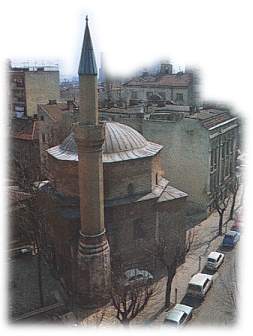 Gospodar Jevremova Street no. 11 - Built between 1660 and 1688 as one of about 80 mosques and other islamic places of worship which existed in Belgrade during its Turkish period. It was originally called the Čohadži Mosque after the cloth (čoha) merchant Hadži-Alija out of whose endowment it was built. During Aurstrian rule between 1717 and 1739 it was converted into Catholic church but, when the Turks returned, so did its function as a mosque. It received the name Bajrakli at the end of the 18th century after the barjak or flag which was raised to signal the simultaneous beginning of prayers in all the mosques of Belgrade. 

Albania Palace Building | The Bajrakli Mosque | Belgrade Palace Building | Belgrade Railway Station | Captain Miša's Building | Cvijeta Zuzorić Art Pavilion | Karađorđeva Street | Knez Mihailova Street | Princess Ljubica's Residence | Millenary Monunemt on Gardoš Hill | Price Miloš's Residence | The National Theatre | Nemanjina Street | Nikola Pašic Square | Republic Square | Skadarlija | Slavija Square | Student Square | The Trade Union Hall | Terazije Square | The '?' Cafe Restaurant | Article about the architecture and building in Belgrade |